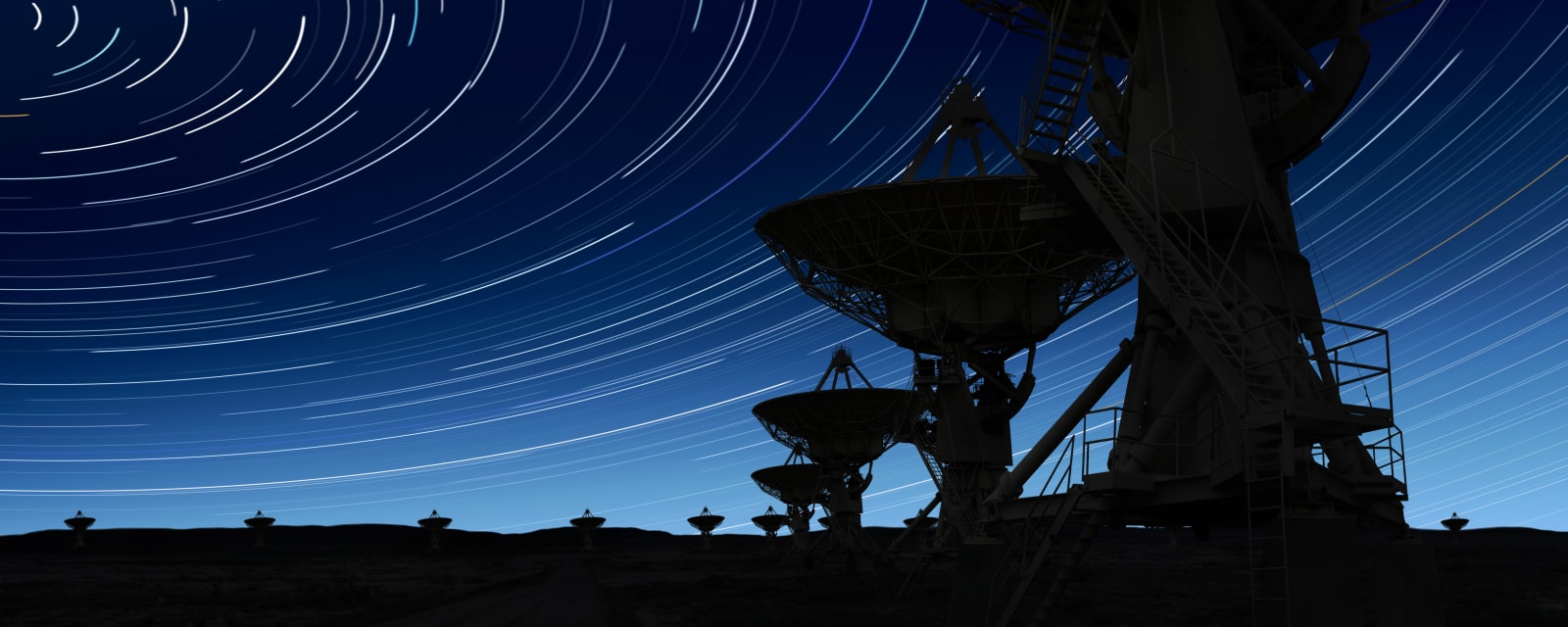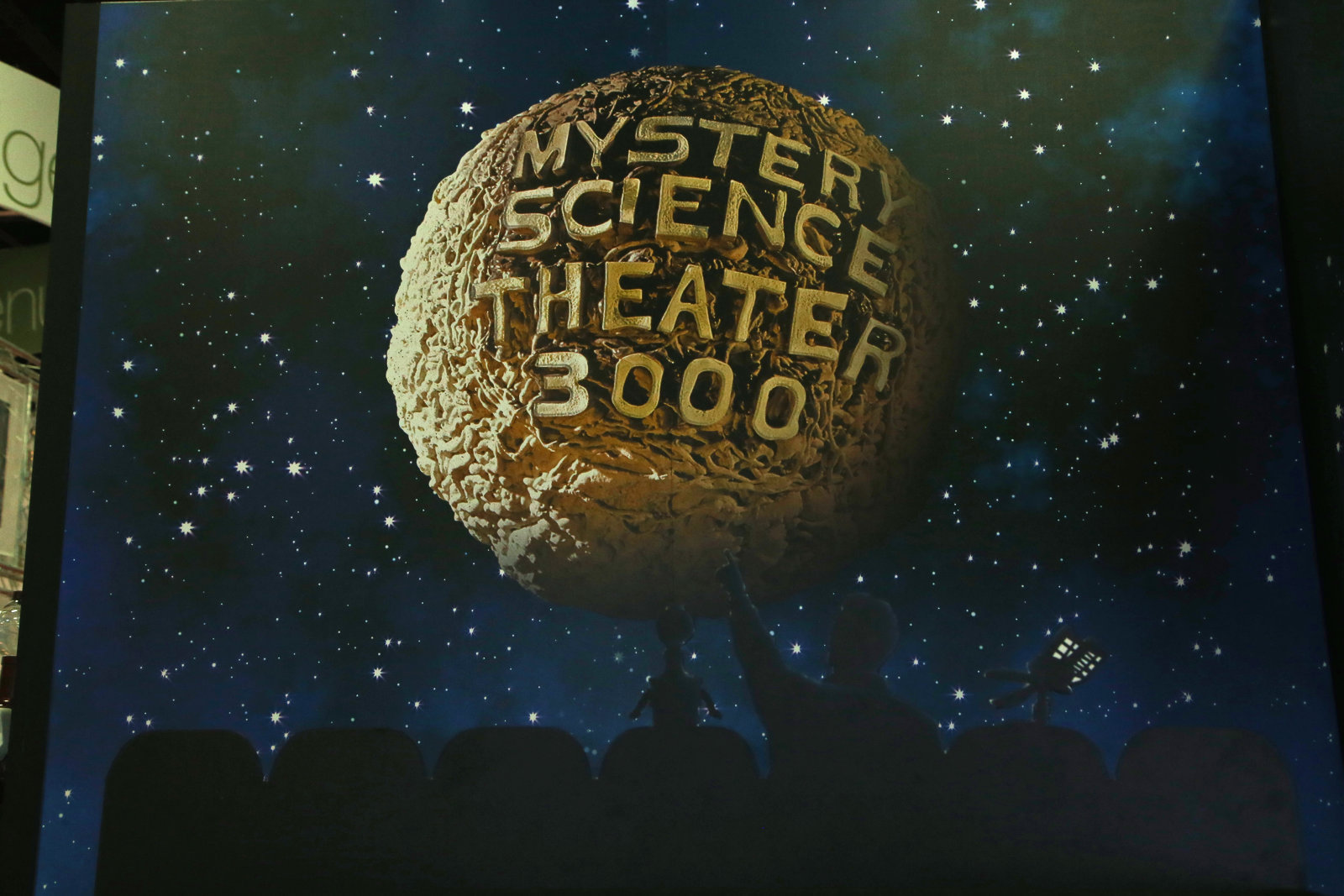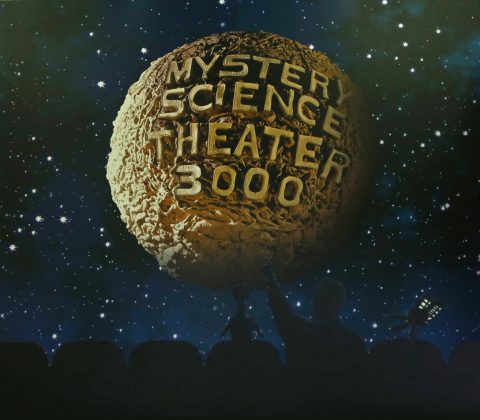Posts Tagged: science
The next big thing in science is already in your pocket
By borrowing computing power from millions of smartphones and home PCs, researchers can crack big scientific problems faster than ever before.
Emerging Tech | Digital Trends
Hitting the Books: The mad science behind digging really huge holes
Sure you could replace the President with a self-aware roboclone, take the moon hostage, threaten to release a millennia-old Eldritch horror to wreak unspeakable terror upon the populace, or just blew up a few financial servers in your pursuit of global dominion, but a savvy supervillain knows that the true path to power is through holes — the deeper, the better.
In the excerpt below from his newest book, author Ryan North spelunks into the issues surrounding extreme mining and how the same principles that brought us the Kola Superdeep Borehole could be leveraged to dominate humanity, or turn a tidy profit. And, if you're not digging the whole hole scheme, How to Take Over the World has designs for every wannabe Brain, from pulling the internet's proverbial plug to bioengineering a dinosaur army — even achieving immortality if the first few plans fail to pan out.
From HOW TO TAKE OVER THE WORLD: Practical Schemes and Scientific Solutions for the Aspiring Supervillain by Ryan North published on March 15, 2022 by Riverhead, an imprint of Penguin Publishing Group, a division of Penguin Random House LLC. Copyright © 2022 Ryan North.
The world’s deepest hole, as of this writing, is the now-abandoned Kola Superdeep Borehole, located on the Kola Peninsula in Russia, north of the Arctic Circle. It’s a hole 23 centimeters (cm) in diameter, and it was started in May 1970 with a target depth of 15,000m. By 1989, Soviet scientists had reached a depth of 12,262m, but they found they were unable to make further progress due to a few related issues. The first was that temperatures were increasing faster than they’d expected. They’d expected to encounter temperatures of around 100°C at that depth but encountered 180°C heat instead, which was damaging their equipment. That, combined with the type of rock found and the pressure at those depths, was causing the rock to behave in a way that was almost plastic. Whenever the drill bit was removed for maintenance or repair, rocks would move into the hole to fill it. Attempts to dig deeper were made for years, but no hole ever made it farther than 12,262m, and the scientists were forced to conclude that there was simply no technology available at the time that could push any deeper. The Soviet Union dissolved in 1991 in an unrelated event, drilling stopped in 1992, the site was shut down, and the surface-level opening to the hole was welded closed in 1995. Today, the drill site is an abandoned and crumbling ruin, and that still-world-record-holding maximum depth, 12,262m, is less than 0.2% of the way to the Earth’s center, some 6,371 km below.
So, that’s a concern.
But that was back in the ’90s, and we humans have continued to dig holes since! The International Ocean Discovery Program (IODP) has a plan to dig through the thinner oceanic crust, hoping to break through to the mantle and recover the first sample of it taken in place — but this project, estimated to cost $ 1 billion USD, has not yet been successful. Still, a ship built for the project, the Chikyū, has briefly held the world record for deepest oceanic hole (7,740m below sea level!), until it was surpassed by the Deepwater Horizon drilling rig, which dug a hole 10,683m below sea level and then exploded.
The evidence here all points to one depressing conclusion: the deepest holes humanity has ever made don’t go nearly far enough, and they’ve already reached the point where things get too hot — and too plastic — to continue.
But these holes were all dug not by supervillains chasing lost gold but by scientists, a group largely constrained by their “ethical principles” and “socially accepted morals.” To a supervillain, the solution here is obvious. If the problem is that the rocks are so hot that they’re damaging equipment and flowing into the hole, why not simply make a hole wide enough that some slight movement isn’t catastrophic, and cool enough so the rocks are all hardened into place? Why not simply abandon the tiny, 23cm-diameter boreholes of the Soviets and the similarly sized drill holes of the IODP, and instead think of something bigger? Something bolder?
Something like a colossal open-pit mine?
Such a mine would minimize the effects of rocks shifting by giving them a lot more room to shift — and us a lot more time to react — before they become a problem. You could keep those rocks cool and rigid with one of the most convenient coolants we have: cold liquid water. On contact with hot rocks or magma, water turns to steam, carrying that heat up and away into the atmosphere, where it can disperse naturally — while at the same time cooling the rocks so that they remain both solid enough to drill and rigid enough to stay in place. It would take an incredible amount of water, but lucky for us, Earth’s surface is 71% covered with the stuff!
So if you build a sufficiently large open-pit mine next to the ocean and use a dam to allow water to flow into the pit to cool the rocks as needed, then you’ll be the proud owner of a mine that allows you to reach greater depths, both literal and metaphorical, than anyone else in history! This scheme has the added benefit that, if we’re clever, we can use the steam that’s generated by cooling all that hot rock and magma to spin turbines, which could then generate more power for drilling. You’ll build a steam engine that’s powered by the primordial and nigh-inexhaustible heat of the Earth herself.
The exact dimensions of open-pit mines vary depending on what’s being mined, but they’re all shaped like irregular cones, with the biggest part at ground level and the smallest part at the bottom of the pit. The open-pit mine that’s both the world’s largest and deepest is the Bingham Canyon copper mine in Utah: it’s been in use since 1906, and in that time it has produced a hole in the Earth’s crust that’s 4km wide and 1.2km deep. Using those dimensions as a rough guide produces the following chart:
… and here we have another problem. Just reaching the bottom of the crust needs a hole over five times the length of the island of Manhattan, dozens of times wider than any other hole made by humanity, and easily large enough to be seen from space. Reaching the bottom of the lower mantle would require a hole so huge that its opening would encompass 75% of the Earth’s diameter, and to do the same with the outer and inner cores requires holes that are wider than the Earth itself.
Even if you could turn almost half the Earth into an open-pit mine cooled by seawater, the steam created by cooling a pit that size would effectively boil the oceans and turn the Earth into a sauna, destroying the climate, collapsing food chains, and threatening all life on the planet — and that’s before you even reach the hostage-taking phase, let alone the part where you plunder forbidden gold! Things get even bleaker once you take into account the responses from the governments you’d upset by turning their countries into hole; the almost inconceivable amount of time, energy, and money required to move that much matter; where you’d put all that rock once you dug it up; or the true, objective inability for anyone, no matter how well funded, ambitious, or self-realized, to possibly dig a hole this huge.
So.
That’s another concern.
It pains me to say this, but… there is absolutely no way, given current technology, for anyone to dig a hole to the center of the Earth no matter how well funded they are, even if they drain the world’s oceans in the attempt. We have reached the point where your ambition has outpaced even my wildest plans, most villainous schemes, and more importantly strongest and most heat-resistant materials. Heck, we’re actually closer to immortal humans (see Chapter 8) than we are to tunneling to the Earth’s core. It’s unachievable. Impossible. There’s simply no way forward.
It’s truly, truly hopeless. It’s hard for me to admit it, but even the maddest science can’t realize every ambition.
I’m sorry. There’s nothing more I can do.
. . . for that plan, anyway!
But every good villain always has a Plan B, one that snatches victory from the jaws of defeat. And heck, if you’ve got your heart set on digging a hole, making some demands, and becoming richer than Midas and Gates and Luthor in the process—who am I to stop you?
You’re going to sidestep the issues of heat and pressure in the Earth’s core by staying safely inside the crust, within the depth range of holes we already know how to dig. And you’re going to sidestep the issues of legality that tend to surround schemes to take the Earth’s core hostage by instead legally selling access to your hole to large corporations and the megarich, who will happily pay through their noses for the privilege. Why?
Because instead of digging down, you’re going to dig sideways. Instead of mining gold, you’re going to mine information. And unlike even the lost gold of the Earth’s core, this mine is practically inexhaustible.
It all has to do with stock trading. In the mid-twentieth century, stock exchanges had trading floors, which were actual, physical floors where offers to buy and sell were shouted, out loud, to other traders. It was noisy and chaotic, but it ensured everyone on the trading floor had, in theory, equal access to the same information. Those floor traders were later supplemented by telephone trading, and then almost entirely replaced by electronic trading, which is how most stock exchanges operate today. At the time, both telephone and electronic trading could be pitched as simply a higher-tech version of the same floor trading that already existed, but they also did something more subtle: they moved trading from the trading floor to outside the exchanges themselves, where everyone might not have access to the same information.
Turns out, there’s money to be made from that.
Making a pickle-infused cake, for science
Although I haven't had any formal training as a chef, I consider myself an above-average eater. So when I was presented with a whipping siphon — the ruffian responsible for the foam craze that once plagued high-end restaurants and now appears in tre…
Engadget RSS Feed
[TA Deals] Save 97% on the Machine Learning & Data Science certification training bundle
Interested in figuring out how machine learning & data science can help you in your job or hobbies? We’re offering a discount on the Machine Learning & Data Science certification training bundle right now that will help you out. This bundle includes 8 courses and 48 hours of content covering tons of material for Tensorflow, […]
Come comment on this article: [TA Deals] Save 97% on the Machine Learning & Data Science certification training bundle
[TA Deals] Save on the Complete Python Data Science bundle (96% off)
Python is an extremely flexible and powerful scripting language that can be used for a ton of things, and right now you can score a bundle that will show you how to utilize Python to do some data analysis. The bundle is cheap now, too. The Complete Python Data Science bundle includes 12 courses and […]
Come comment on this article: [TA Deals] Save on the Complete Python Data Science bundle (96% off)
[TA Deals] Save 97% on the 2019 Complete Computer Science Bundle
Ready to start learning computer science? We’ve got a serious deal on the 2019 Complete Computer Science bundle that will get your feet wet and show you the ropes without breaking the bank. This bundle includes 11 courses dealing with Python, building apps and chatbots, web development, and more, covering a ton of stuff that […]
Come comment on this article: [TA Deals] Save 97% on the 2019 Complete Computer Science Bundle
New Nova miniseries will explore puzzling science mysteries

Engadget RSS Feed


Geeks are using science to make the best chocolate ever
 Rob Anderson is a geek. So he makes chocolate for other geeks, or, more accurately, "people who really like chocolate and geek out about it." What does he mean by that? If you change one step of the chocolate-making process, you change the taste of…
Rob Anderson is a geek. So he makes chocolate for other geeks, or, more accurately, "people who really like chocolate and geek out about it." What does he mean by that? If you change one step of the chocolate-making process, you change the taste of…
Engadget RSS Feed
[TA Deals] Save 97% off the Ultimate Computer Science Career Bundle
If you want to make the best of your career in computer science, you’ll want our Ultimate Computer Science Career Bundle, especially while it’s on a heavy discount. This bundle includes over 134 hours of content to cover some incredibly important computer tech that many of us would be able to take advantage of. The courses […]
Come comment on this article: [TA Deals] Save 97% off the Ultimate Computer Science Career Bundle
[TA Deals] Master data science and analytics with this bundle for less than $50
On Talk Android Deals, the Certified Professional Data Science w/ Python Bundle is up for grabs with a massive discount. It’ll teach you everything you need to know about data science and analytics. Access 2 comprehensive courses 24/7 Describe each stage of the data analytics process Explain basic statistical concepts relevant to data analytics Install […]
Come comment on this article: [TA Deals] Master data science and analytics with this bundle for less than $ 50


‘Mystery Science Theater 3000’ comeback lands at Netflix
 You won't have to go out of your way to watch the Mystery Science Theater 3000 revival. Netflix has picked up the crowdfunded make-fun-of-movies show and will be the only place to stream it in the US, UK, Australia, Canada, Ireland and New Zealand….
You won't have to go out of your way to watch the Mystery Science Theater 3000 revival. Netflix has picked up the crowdfunded make-fun-of-movies show and will be the only place to stream it in the US, UK, Australia, Canada, Ireland and New Zealand….
Engadget RSS Feed
Science fiction uses ultraviolet light to kill vampires: real science uses it fight and kill something worse — cancer
Sci-Fi taught us ultraviolet light was a weapon to use against the scary undead stalking the night. Actual science has discovered that it may be an extremely effective treatment for cancer.
The post Science fiction uses ultraviolet light to kill vampires: real science uses it fight and kill something worse — cancer appeared first on Digital Trends.
Obama wants your children’s opinions in the new Kids Science Advisors program
Over the course of his presidency, Barack Obama has made clear his dedication to STEM education. Now, the leader is proving just how much faith he has in the innovative minds of America’s posterity by forming the Kids Science Advisors.
The post Obama wants your children’s opinions in the new Kids Science Advisors program appeared first on Digital Trends.
Google has a new, free app to help you do science with your smartphone
Hoping to bring out the curiosity in each of us, Google has unveiled Science Journal, an app that measures and records data in real time, and then turns all that input into consumer-friendly graphs and charts.
The post Google has a new, free app to help you do science with your smartphone appeared first on Digital Trends.
